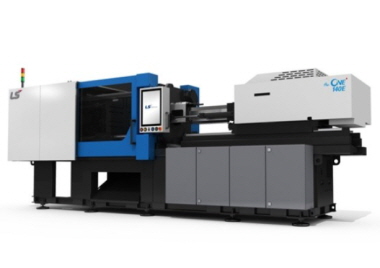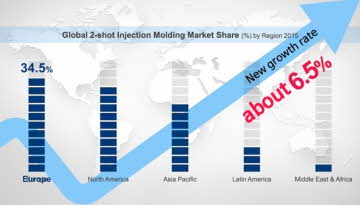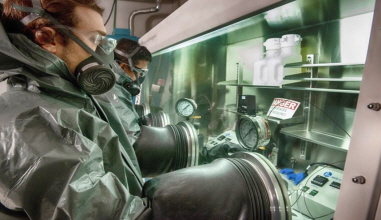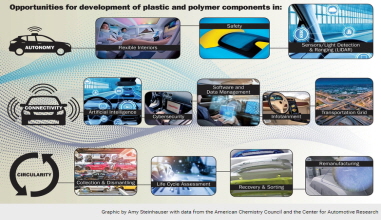Technology & solutions
Virtually limitless opportunities for plastics in changing auto industry, researchers say
'Virtually limitless' opportunities for plastics in changing auto industry, researchers say

ACC's 2020 automotive road map shows many opportunities for advanced plastics and polymer composites in future car design.
An eventual shift to personal mobility isn't possible without plastics, said Gina Oliver, senior director of ACC's automotive team, which developed the road map.
Bernard Swiecki, director of Automotive Communities Partnership at CAR, said during Plastics News' March 23 Plastics in Automotive live session that its own technology road map, which came out in November, also shows a space for plastic development, as mild- and high-strength steels decline.
"I don't think anything here has the same explosion, in terms of growth, that you see in plastics and composites," he said. And that forecast "seems to be basically a world consensus."
The challenge for carmakers and suppliers, Swiecki said, will be "getting these materials to play nice together."

Materials and autonomy
Considering a pending future of autonomy, Oliver said, plastic components will need to be developed "throughout the entire vehicle."
"In order for autonomous vehicles to become a reality, the vehicle is going to have thousands of sensors, radar, lidar and reconfigurable interiors with people out of normal-occupant positions," she said. "All of those sensors are going to need plastics to work."
Developers will need to figure out new, movable seating scenarios in vehicle interiors, Oliver said, and how to protect occupants in those configurations.
"Folks are going to have this new pocket of time and we need to figure out how to protect them doing whatever it is they want to do inside their vehicle, whether it's work at a desk or kids playing video games in the back around a TV," she said. "You're going to have to put air bags in places that aren't normally there in a vehicle, have seat belts in certain configurations and move the seat belts around in the vehicle. … Plastics are the only way to make that happen."
Electrification opportunities
ACC's road map also shows many opportunities for plastics and composites to help maintain vehicle performance in electrification.
"People still want power when they step on the gas pedal," Oliver said. "You have to use a light, strong material, and that's what plastics and composites do."
However, Swiecki said, CAR doesn't predict electric vehicles taking ahold of the market, even in the next 10 years.
"It's a little bit underwhelming compared to some of the really optimistic estimates a decade ago or in 2008 when fuel shot up to four dollars a gallon," Swiecki said. "We still think that close to 90 percent of the vehicles that we sell in 2030 will still be either internal combustion engine working alone or internal combustion engine in a hybrid system."
Ride-sharing
Oliver said automotive OEMs and engineers are already starting to implement more plastic components, instead of turning to traditional materials they were more comfortable with in the past.
In a potential future with more ride-sharing and large fleets of vehicles, Oliver said, affordable and easy-to-clean component material will be important for both manufacturers and consumers.
"Plastics and composites are that tough material on the interior that can be antimicrobial," she said. "We also have the possibility of self-cleaning surfaces. It makes a more pleasant and hygienic experience for all occupants and consumers. People don't want to get into a car that a lot of people have touched that day unless they can feel really confident that it's clean."
In this revolutionary time for personal mobility, Oliver said, the traditionally slow-moving automotive industry needs to find solutions and implement them quickly in order to keep up.
Doug Gergel, automotive application director at 3D printing startup Carbon, said that additive manufacturing can "make immediate design results a reality."
"Suppliers today largely rely on low-volume, single-cavity injection mold tools," Gergel said. "These tools can take 12, 14, 16 weeks to have ready to go, and then there's an iterate cycle to inspect and report the tool.
"As we're seeing these trends come forward, what I see is greater segmentation amongst automakers, more diverse programs, programs that have go-fast timing and that are relatively low volume," Gergel said "I think additive manufacturing offers value in a lot of those cases."
Sustainability and circularity
Reeshemah Howard, director of strategic programs and partnerships at General Motors, said the automaker's sustainability goals like total end-of-life battery recycling and greater than 85 percent vehicle recycling by mass, among others, call for supplier collaborator for new material innovations in its vehicles.
"GM currently operates with the circular economy in mind," Howard said. "For plastics, we're evaluating if we can use some additional post-consumer or post-industrial content as well as bio-based materials inside some of our plastics."
In 2020, ACC added two new letters to its usual "ACES" road map acronym, to "put a spotlight on" sustainability and circularity, Oliver said.
"Contrary to popular belief, plastic and composites are recyclable," Oliver said. "There's a lot of opportunity for in-production recycling of waste. We're seeing more and more OEMs utilize that and it drives production cost down for them.
"Obviously automotive is a more durable good, but at the end of vehicle life, we need to work together to make sure materials can be separated … in order to recycle them, put them back into use for new vehicle production, or maybe turn them into a good elsewhere in the value stream, like water bottles, carpets or whatever that may be," she said.
A conversation on how to achieve circularity in the automotive industry, "a huge undertaking," Oliver said, needs to be had across the entire supply chain.
"This is an infrastructure challenge for everyone in the industry," Oliver said. "Let's have a call to action and identify the existing challenges in terms infrastructure for of end of vehicle life. … We need to work together to define what it means and how to get there."
Oliver said plastics allow "virtually limitless possibilities and opportunities for solutions."
"In plastics and chemistry, if you tell us what you need, we can create it," Oliver said. But ACC can't actualize a revolution alone, she said. "It's something we all have to do together."
Connectivity
Circularity
Sustainability
Electrification
Source :




















